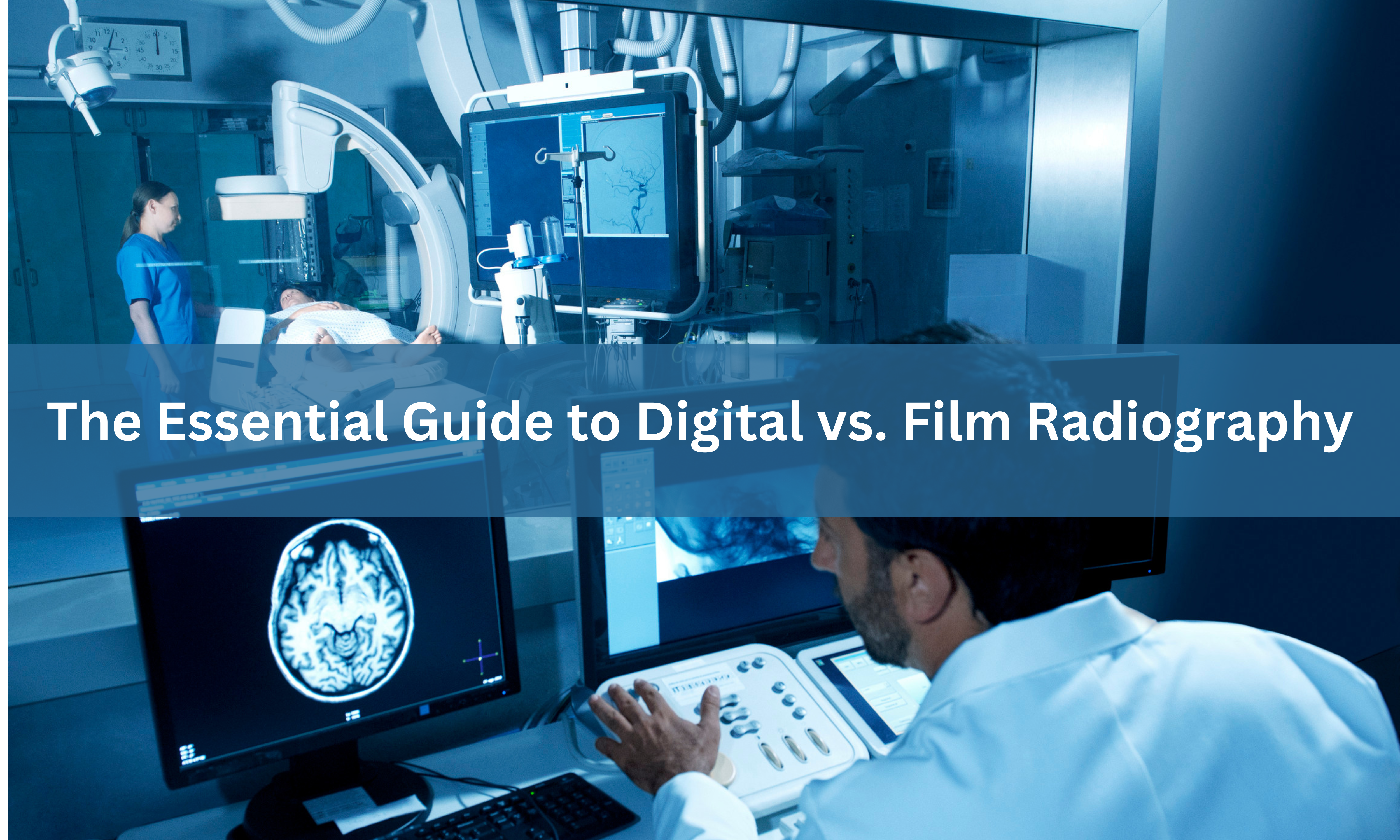The medical field has witnessed a revolution in terms of technological advancements. One area where this change is most notable is radiography. With the advent of digital radiography, traditional film radiography found itself in the balance.
But what makes these two systems different? And which one should healthcare professionals invest in?
Let’s dive into a comprehensive Comparative Analysis: Digital Radiography vs. Film Radiography – Benefits and limitations of each system.
Comparative Analysis: Digital Radiography vs. Film Radiography – Benefits and limitations of each system.
Digital Radiography: The Modern Marvel
- Instant Imaging: Digital radiography ensures that there’s no waiting around for film development. Instant imaging allows for quick diagnosis, which can be lifesaving in emergencies.
- Enhanced Image Quality: Digital radiographs have surpassed their film counterparts regarding clarity. These high-resolution images help doctors make more accurate diagnoses.
- Environmental Impact: Unlike film radiography, digital ones don’t require chemicals for development, significantly reducing the environmental footprint.
- Cost Efficiency: Although the initial investment may be steep, digital radiography eventually proves cost-effective, eliminating the constant need for films.
- Limitations of Digital Radiography: As promising as it might sound, digital radiography has drawbacks. These include the high initial cost, a learning curve for the staff, and the risk of overexposure to radiation due to multiple takes.
Film Radiography: The Traditional Titan
- Established and Trusted: Film radiography has been around for ages and is trusted by many practitioners. This trust stems from years of consistent results.
- Lower Initial Cost: Setting up a film radiograph machine is cheaper than a digital one, making it a go-to choice for many smaller clinics.
- Limitations of Film Radiography: Film radiography’s limitations are the flip side of digital radiography’s benefits. They include a longer processing time, constant expenditure on films, environmental concerns due to chemical usage, and, sometimes, lesser clarity in images.
Environmental Concerns – The Green Debate
Digital radiography takes the cake when it comes to being environment-friendly. The absence of chemicals benefits the planet and ensures a safer workspace. On the other hand, film radiography involves using chemicals that can harm the environment.
Cost Analysis – Counting the Pennies
In the short run, film radiography seems like a more affordable option. However, when one factor in the recurring costs of films and chemicals, digital radiography, with its one-time investment, becomes more economical in the long run.
Which One is More User-friendly?
Digital radiography, with its advanced software, can seem daunting initially. However, once the learning phase is over, its user-friendly nature shines through, especially compared to the manual efforts required in film radiography.
Radiation Exposure – Safety First
Digital radiography often requires lower radiation doses compared to film radiography. This is a significant advantage as it reduces potential health risks associated with radiation exposure.
Storage and Retrieval – The Digital Age Blessing
Storing films requires physical space, while digital images are stored on computers, making retrieval easier and ensuring that the images don’t degrade over time.

Conclusion
While film radiography has merits and has served the medical community for years, digital radiography appears to be the future. Its environmental benefits, cost efficiency in the long run, and superior image quality make it an enticing option for medical professionals.
Frequently Asked Questions
What is the main advantage of digital radiography over film radiography?
The main advantage is the instant imaging capability of digital radiography, which offers faster diagnosis and treatment.
Is digital radiography environmentally friendlier?
Digital radiography is more environmentally friendly as it doesn’t use chemicals for film development.
Why do some clinics still use film radiography?
The lower initial investment and the trust in a long-established system are why some clinics still prefer film radiography.
Are there any health benefits to choosing digital over film radiography?
Digital radiography often requires lower doses of radiation, reducing potential health risks.
How do storage methods differ between the two systems?
Digital images are stored electronically, while films need physical storage.
Which system offers better image quality?
Digital radiography generally provides higher-resolution images compared to film radiography.

